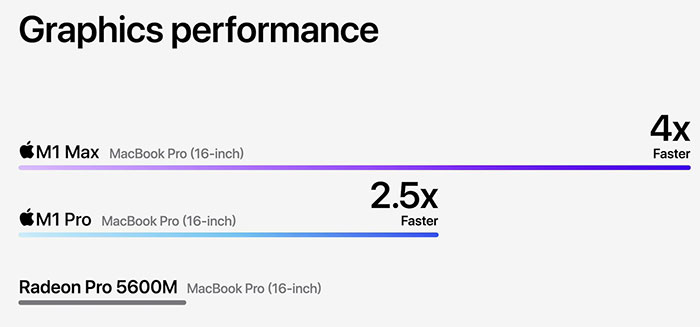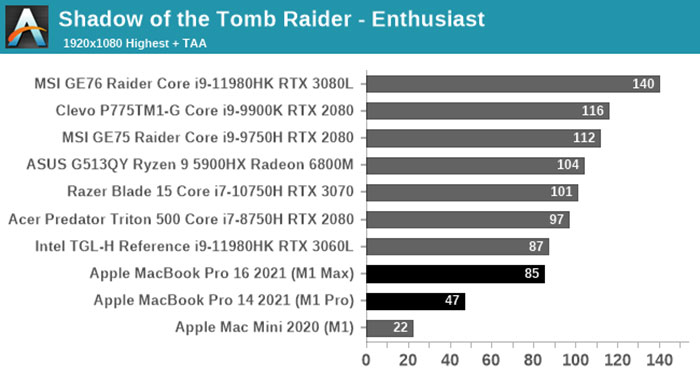It was very interesting to see Apple revamp its M1 silicon to coincide with the launch of the new MacBook Pro laptops last week. Perhaps even more eyebrow-raising were the new graphics performance claims. If you check back at our article on the launch, you will see that Apple claimed that the M1 Max SoC in the MacBook Pro 16-inch could deliver 4x the graphics performance of AMD's Radeon Pro 5600M GPU. The second rung M1 Pro, meanwhile, was still a decent 2.5X faster in graphics compared to the AMD GPU which debuted as the most powerful MBP option in June 2020.

Exhibit 1
Now the new Apple M1 Pro, M1 Max-powered Apple MacBook Pro machines have started to get into the hands of users and reviewers, we are starting to see the real-world performance of these laptops sketched out for us. PC heavyweight sites like AnandTech and PCMag have, in recent hours, taken a closer look at these machines in terms of graphics firepower than one might expect from 'the tame Apple press'.
Exhibit 2
AnandTech's cold hard stare at the GPU performance of the M1 Pro and M1 Max has the most relatable gaming performance comparisons - including Shadow of the Tomb Raider, and Borderlands 3 – vs a throng of modern gaming laptops with up to RTX 3080 graphics. Meanwhile, PCMag looked only at GFXBench 5.0 synthetics, which will probably please Apple.

Third-party gaming performance comparison test
In brief, Apple's strong synthetic and productivity performance is impressive but "all over the place," to quote AnandTech's Editor Ryan Smith. However, gaming performance isn't accurately represented by the AMD Radeon Pro 5600M GPU comparison slide from the MacBook Pro launch (chart at top of this article). Apple Boot Camp isn't able to help, as it isn't available right now for M1 Macs, and Apple systems need to cope with x86 binary translation and an overall lack of gaming optimization for AAA titles.
Other important points from the Apple MacBook Pro reviews are; battery life looks great in reality too, the screens are great - but the notch might annoy some, the new 6-speaker sound system is a good upgrade, HDMI and SD card ports are welcome, and these systems are expensive. However, if you are a Mac user who professionally makes use of the Apple creative apps optimized for M1 (e.g. Final Cut Pro with ProRes and ProRes RAW support) this is probably a good upgrade to crunch through your workloads - if you need a portable and don't want to wait for the inevitable desktop M1 Macs with powerful new silicon.














